This article was co-authored by Allison Romero, PT, DPT. Dr. Allison Romero is a Pelvic Health Specialist, Physical Therapist, and the Owner of Reclaim Pelvic Therapy in the San Francisco Bay Area. With over a decade of experience, Allison specializes in comprehensive pelvic physical therapy treatments for pelvic floor dysfunction. She holds a Bachelor of Science in Kinesiology and Exercise Science from Sonoma State University and a Doctor of Physical Therapy from the University of Southern California. Allison is a board certified Physical Therapist in California and is a member of the American Physical Therapy Association-Section on Women’s Health and the International Pelvic Pain Society.
This article has been viewed 134,749 times.
Kegels are well known for their ability to tighten the pelvic floor, reduce incontinence, improve sexual enjoyment, and help with childbirth. Reverse kegels can also help with these goals. Each time you do a reverse kegel, you relax, lengthen, and stretch the pelvic floor, which may help to relieve pain or tension in the area. Men and women can perform reverse kegels, and you can do them anywhere without any special equipment!
Steps
Doing Reverse Kegels
-
1Contract your pelvic floor muscles enough to identify them. Imagine you are trying to stop yourself from peeing.[1] These are your pelvic floor muscles. Tighten your pelvic floor muscles just enough to identify them.[2] Give them a slight squeeze and hold it. As you hold, notice where the muscles are located and how it feels to squeeze them.[3]
- This may feel very odd to you if you have never done kegels before. Keep in mind that it becomes easier and more natural with practice.
-
2Release the muscles to let your pelvic floor drop. Now that you have identified the muscles required to raise your pelvic floor, release them and inhale as you do so. This will help your pelvic floor drop. You should feel a sensation like your pelvic floor is moving downwards. Let it go completely.[4]
- Remember that dropping your pelvic floor is the same action you use when you pee or poop, so relaxing these muscles should feel good.
- You can relax your pelvic floor muscles for as long as you are able. Try counting to 5 if this is your first time and work up to relaxing them for 10 or even 15 seconds.
-
3Lift your hips up to improve the stretch if you are lying down. If you want to intensify the stretch that you get from a reverse kegel, do them while you are lying down and lift your hips up as you breathe in and release. This will allow the pelvic floor muscles to lengthen even more and deepen the stretch.[5]
- Do not tilt your hips. Just lift them off the ground slightly.
-
4Repeat the exercise 10 times and do 3 sets daily. To get the most benefit from reverse kegels, it is helpful to practice them daily. Aim for 3 sets of 10 repetitions and add more reps and sets as your pelvic floor muscles get stronger.[6] Only repeat the release portion of the exercise unless you need to re-identify your pelvic floor muscles.[7]
- If you experience discomfort and can only handle doing a few of these at first, that is fine! Start wherever you are comfortable and work up from there.
Getting Comfortable
-
1Go to the bathroom before attempting a reverse kegel. Doing reverse kegels may cause you to urinate or have a bowel movement. This is because they involve the same muscles that you use when you go to the bathroom. To avoid having an accident, make sure that your bladder and bowels are empty first.[8]
-
2Sit or lie down in a comfortable position. You can do reverse kegels in any position that feels comfortable to you. Sit in a chair, on the floor, or propped up on pillows. Alternatively, lie on your back with your legs flat on the floor, with your knees bent and your feet flat on the floor, or with your legs resting on a sofa or chair.[9]
- Keep in mind that you can do reverse kegels anywhere. No one will be able to tell that you are doing them, so you could do them while you are waiting for the bus, during a business lunch, or in the waiting room at the dentist.
-
3Close your eyes or focus on an object in front of you. This is optional, but you may find it helpful to relax and concentrate on your pelvic floor muscles if your eyes are closed or focused on a focal point. If you want to use a focal point, try lighting a candle and gazing at the flame, or choose an object in front of you to look at, such as a picture or a trinket on a bookshelf.[10]
- Make sure to keep your gaze soft if you choose to focus on an object. This will help you to avoid creating tension in your face and possibly in other areas of your body. Let your eyelids droop slightly and blink as needed.
References
- ↑ https://www.mayoclinic.org/healthy-lifestyle/womens-health/in-depth/kegel-exercises/art-20045283
- ↑ https://pelvichealthsolutions.ca/knowledge-base/reverse-kegels-pelvic-floor-drops
- ↑ Allison Romero, PT, DPT. Pelvic Health Specialist. Expert Interview. 2 December 2020.
- ↑ https://cumming.ucalgary.ca/sites/default/files/teams/88/Reverse%20Kegels%20or%20PF_Drops.pdf
- ↑ https://pelvichealthsolutions.ca/knowledge-base/reverse-kegels-pelvic-floor-drops
- ↑ Allison Romero, PT, DPT. Pelvic Health Specialist. Expert Interview. 2 December 2020.
- ↑ https://www.mayoclinic.org/healthy-lifestyle/womens-health/in-depth/kegel-exercises/art-20045283
- ↑ https://www.youtube.com/watch?v=bnISaRCtofI&feature=youtu.be&t=1m3s
- ↑ https://cumming.ucalgary.ca/sites/default/files/teams/88/Reverse%20Kegels%20or%20PF_Drops.pdf
About This Article
To relax, lengthen, and stretch your pelvic floor, practice doing reverse kegels. Before starting your reverse kegels, go to the bathroom to avoid having an accident. Next, sit or lie down in a comfortable position, and either close your eyes or focus on an object near you to help you relax and concentrate. In order to find your pelvic floor muscles, imagine you’re trying to stop yourself from peeing. As you squeeze your muscles, notice where they are and how they feel. After raising your muscles, release them as you inhale. If you want to intensify the exercise, lie on your back and lift your hips while tightening and relaxing your muscles. Repeat this exercise 10 times at a time, 3 times a day. To learn how long you should hold each pelvic floor release, keep reading!
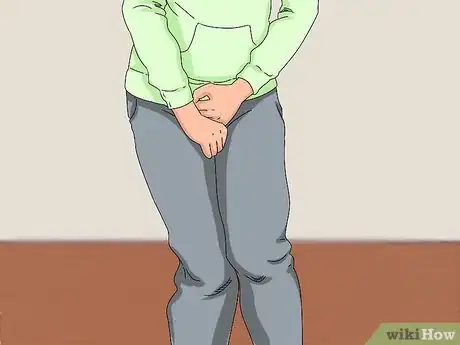

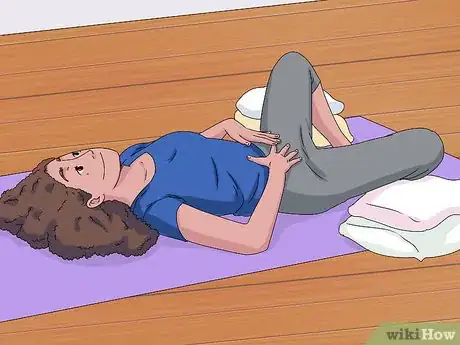
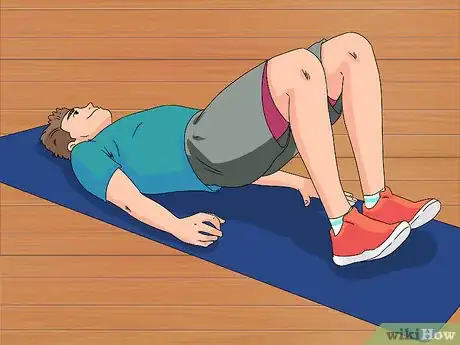
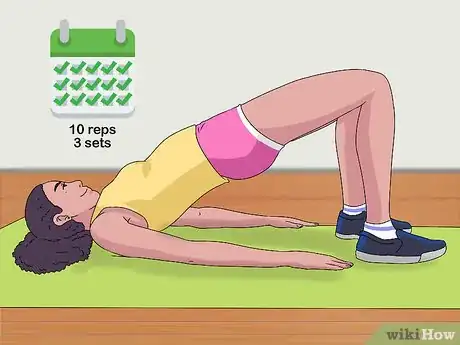
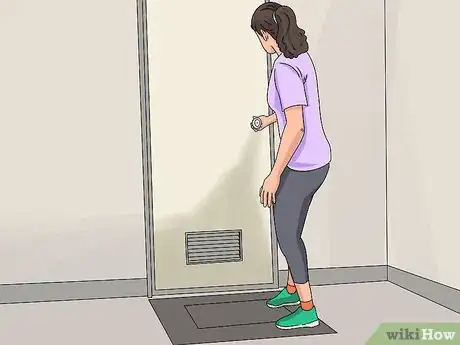
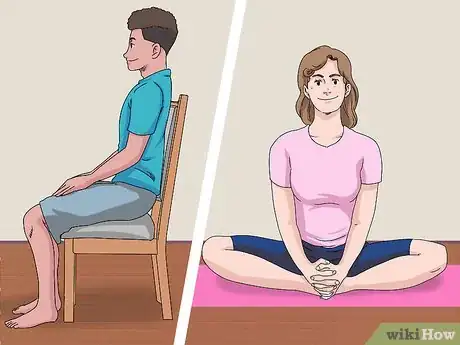

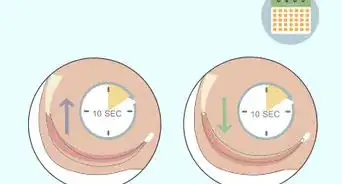





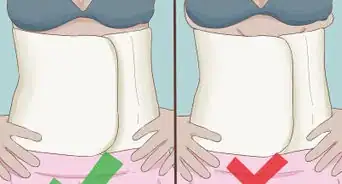


















































Medical Disclaimer
The content of this article is not intended to be a substitute for professional medical advice, examination, diagnosis, or treatment. You should always contact your doctor or other qualified healthcare professional before starting, changing, or stopping any kind of health treatment.
Read More...